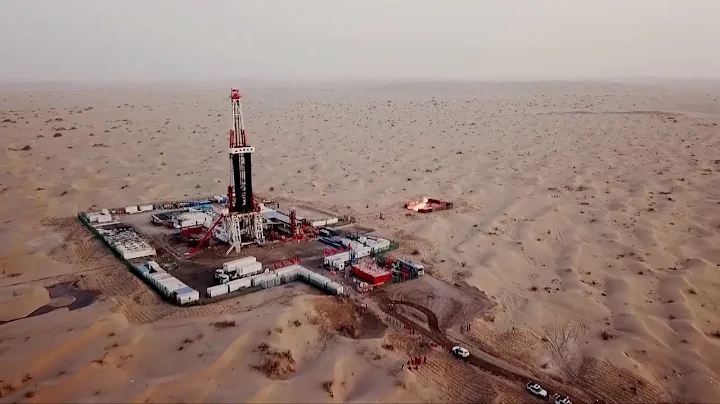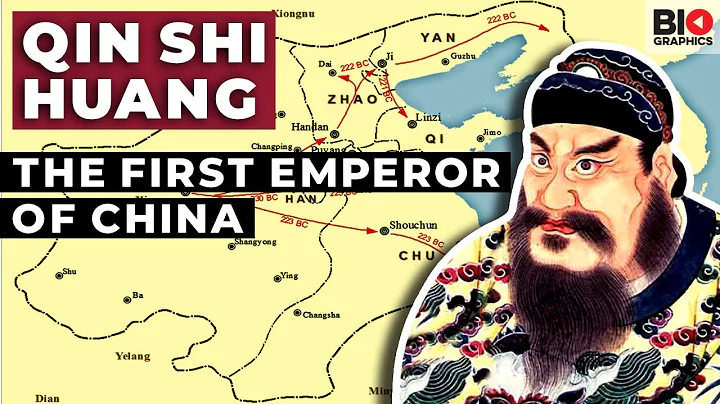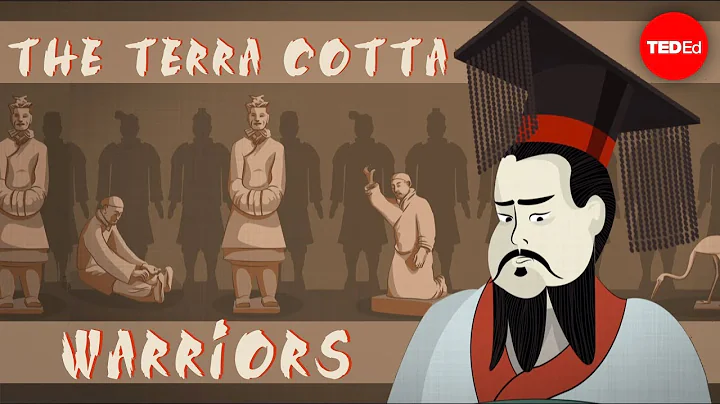Foreword
On February 10, 1914, the Beiyang Government and the American Mobil Oil Company signed the "Sino-US Joint Venture to Establish a Petroleum Company Contract", stipulating that Mobil Oil Company would send experts to establish the " National Kerosene Mine Affairs Office". The mine survey team " went to the areas near Yan'an Prefecture in Shaanxi Province and Chengde Prefecture in Zhili Province to conduct geological exploration and drilling.
American geologist Frederick G. Clapp, as an expert hired by Mobil Oil Company, arrived in Beijing in December 1913, went to Qinhuangdao in late February of the following year, and then transferred to Zhili After inspecting the surrounding areas of Jianchang (today's Lingyuan, Liaoning), they concluded that oil had no mining value. After returning to Beijing, China and the United States agreed to go to Shaanxi for exploration, which was divided into two groups. The first group was led by Ma Dongchen (Clapp's Chinese name). It starts from Beijing, passes through Zhangjiakou and Huai'an in Zhili, then enters Shaanxi via Kelan, Yanggao, Tianzhen, Yingzhou, Ningwu and other places in Shanxi, and finally goes to Wuhan via Henan, and then takes a boat to Shanghai and transfer back to Tianjin.
During Clapp’s inspection in China, in addition to taking photos of mountains, rivers and geology, his extremely high-definition camera also left precious scenery and cultural moments for China a hundred years ago. 
Continuing from the previous itinerary, the inspection team and his delegation were in February 1914 In March, we continued to inspect the territory of Jianchang County (renamed Lingyuan County in 1914, with Tagou as its residence. Today it belongs to Liaoning). The picture above is the map of the 19th year of the Republic of China in the "Lingyuan County Chronicle".
2. Photos in Lingyuan

 . Clapp took the photo at an inn called San-tui-tse on February 23, 1914. Everyone was packing their luggage and getting ready to go. The author judged it to be "山口子" area.
. Clapp took the photo at an inn called San-tui-tse on February 23, 1914. Everyone was packing their luggage and getting ready to go. The author judged it to be "山口子" area. 
 . Also on February 23, 1914, Clapp photographed the mule team that had been transporting oil. However, he did not indicate the location of the shooting. According to the itinerary, it should be between Habaqi and Shanzuizi.
. Also on February 23, 1914, Clapp photographed the mule team that had been transporting oil. However, he did not indicate the location of the shooting. According to the itinerary, it should be between Habaqi and Shanzuizi. 
 . Clapp took a group photo of members of the expedition team on horseback. He mentioned in the annotation that it might be Lingyuan, Liaoning. It seems to be his later memory, because Jianchang County was renamed Lingyuan County in 1914.
. Clapp took a group photo of members of the expedition team on horseback. He mentioned in the annotation that it might be Lingyuan, Liaoning. It seems to be his later memory, because Jianchang County was renamed Lingyuan County in 1914. 
 . Clapp himself rode on a horse and took this photo in a yard. In the description of the picture, he only mentioned that in the Ha-Ba-Chi area, the pronunciation should be habaqi, means in Mongolian. There are many place names like "Mountain Pass" in Lingyuan. After the author's search and judgment, it was determined to be Habaqi Village in Wulanbai Town, Lingyuan City.
. Clapp himself rode on a horse and took this photo in a yard. In the description of the picture, he only mentioned that in the Ha-Ba-Chi area, the pronunciation should be habaqi, means in Mongolian. There are many place names like "Mountain Pass" in Lingyuan. After the author's search and judgment, it was determined to be Habaqi Village in Wulanbai Town, Lingyuan City. 
Enlarging the front picture, Clapp's eyes are firm, and the outline of the Jianshan Mountain on the upper right is clearly discernible, which is Jinhuashan located in Habaqi Village.

 . This picture was also taken in Habaqi Village. It is in the same place as picture 4. Clapp annotated the picture as being taken on February 23, 1914. From left to right, they are Cheng, Ho, and Wu. Through other information Regarding the member information of the inspection team, the author determines that Ho refers to He Miaosen and Wu refers to Wu Haoling. I hope that their descendants can read this article and see the shadow of their ancestors a hundred years ago.
. This picture was also taken in Habaqi Village. It is in the same place as picture 4. Clapp annotated the picture as being taken on February 23, 1914. From left to right, they are Cheng, Ho, and Wu. Through other information Regarding the member information of the inspection team, the author determines that Ho refers to He Miaosen and Wu refers to Wu Haoling. I hope that their descendants can read this article and see the shadow of their ancestors a hundred years ago. 
 . Gravel in the mountains photographed by Clapp on February 28, 1914 in Pei-tsiao-ling.
. Gravel in the mountains photographed by Clapp on February 28, 1914 in Pei-tsiao-ling. 
 . On the same day as the previous picture, Clapp also took a photo of the cliff gravel at Chu-chan-kou on February 28, 1914.
. On the same day as the previous picture, Clapp also took a photo of the cliff gravel at Chu-chan-kou on February 28, 1914. 
 , Clapp took the photo near Deng-chia-chang-tze on March 1, 1914. Lingyuan has the name of "Dengjiazhi". The rocks are rugged, and there is an iron pickaxe brought from the United States below. Plates, the rock textures represented by these mountainous landforms, are believed to have been used by Clapp for geological analysis.
, Clapp took the photo near Deng-chia-chang-tze on March 1, 1914. Lingyuan has the name of "Dengjiazhi". The rocks are rugged, and there is an iron pickaxe brought from the United States below. Plates, the rock textures represented by these mountainous landforms, are believed to have been used by Clapp for geological analysis. 
 . Also on March 1, 1914, Clapp photographed volcanic tuff and mudstone layers in an area called Wu-tao-Ling-tze. The author judged that it should be the transliteration of "Wudaolingzi".
. Also on March 1, 1914, Clapp photographed volcanic tuff and mudstone layers in an area called Wu-tao-Ling-tze. The author judged that it should be the transliteration of "Wudaolingzi". 
According to the map drawn by the US Army Cartography Service in 1954, Dengjiazhangzi, Wudaoling and Habaqi are all located near Kukong Mountain.

 0. The valley photographed by Clapp is called the entrance of the Hsiao-lan Ho Canyon, surrounded by the Ku-lung-shan area. The author judged that it may be the Cave Mountain in Lingyuan. The canyon is covered with white snow, and people riding on it Riding the horse, that hut may be a land temple.
0. The valley photographed by Clapp is called the entrance of the Hsiao-lan Ho Canyon, surrounded by the Ku-lung-shan area. The author judged that it may be the Cave Mountain in Lingyuan. The canyon is covered with white snow, and people riding on it Riding the horse, that hut may be a land temple. 
 1. Clapp came to Jianchang County, but he did not indicate the date of shooting. It should be after March 1st. It was a sunny day after the heavy snow. The streets in the city were covered with thick snow. The residents on the left were taking pictures. Shoveling snow outside.
1. Clapp came to Jianchang County, but he did not indicate the date of shooting. It should be after March 1st. It was a sunny day after the heavy snow. The streets in the city were covered with thick snow. The residents on the left were taking pictures. Shoveling snow outside. 
Thanks to the high-definition photos taken by Clapp, after the previous picture is enlarged, the long pole erected in the street is actually a billboard, which reads: " Cunyitang self-produces authentic raw and cooked medicines from Yunnan, Guizhou and southern provinces ", see the content It's a pharmacy.

 2. On the streets of Jianchang County, the thick white snow has frozen into smooth ice, like a glacier. In front of the shops on both sides, there are several people looking at the hard roads and not knowing how to get in and out.
2. On the streets of Jianchang County, the thick white snow has frozen into smooth ice, like a glacier. In front of the shops on both sides, there are several people looking at the hard roads and not knowing how to get in and out. 
 3. In a hotel in Jianchang County, the entire expedition team was preparing to set off. Everyone was on horseback and took this photo. The escort soldiers lined up in a row, which was very majestic.
3. In a hotel in Jianchang County, the entire expedition team was preparing to set off. Everyone was on horseback and took this photo. The escort soldiers lined up in a row, which was very majestic. 
 4. Clapp marked this photo as being in Jianchang County. According to his itinerary, it may be in the hotel courtyard in the third picture. Although there is no snow on the roof, it may be that the sunny side of has already melted.
4. Clapp marked this photo as being in Jianchang County. According to his itinerary, it may be in the hotel courtyard in the third picture. Although there is no snow on the roof, it may be that the sunny side of has already melted. 
 5. In Jianchang County (today's Lingyuan), Clapp photographed this scene beside the Daling River on March 3, 1914. In winter, there was almost no river water, and the remaining puddles on the bank were frozen. into ice.
5. In Jianchang County (today's Lingyuan), Clapp photographed this scene beside the Daling River on March 3, 1914. In winter, there was almost no river water, and the remaining puddles on the bank were frozen. into ice. 
The front picture is enlarged, and you can see an old man leading a mule and horse carrying goods on the road on the shore. Next to it are ridges of land, and the village in the distance is not small. It looks like It is relatively affluent. Since Clapp did not indicate the name of the place where the photo was taken, readers who are familiar with Lingyuan are expected to judge based on the mountainous terrain in the photo.

 6. The volcaniclastic rock and agglomerate photographed by Clapp on March 3, 1914 in Nan-tze-shan are located in Niu-ying-tze. The author is probably at Niuyingzi based on the transliteration.
6. The volcaniclastic rock and agglomerate photographed by Clapp on March 3, 1914 in Nan-tze-shan are located in Niu-ying-tze. The author is probably at Niuyingzi based on the transliteration. 
 7. The photo taken by Clapp is marked as the hot spring bath in Yo-schui-tang. The author judges that it is the transliteration of " hot water soup ", and the hot water soup is located more than 30 miles north of Lingyuan County. , has a long history. It is said that Emperor Xuanzong of the Tang Dynasty came here. Of course, it is just a legend and there is no historical evidence. However, in 1681, the 20th year of Emperor Kangxi's reign in the Qing Dynasty, Emperor Kangxi once bathed here during his northern tour outside the Great Wall. His scholar Gao Shiqi wrote a poem:
7. The photo taken by Clapp is marked as the hot spring bath in Yo-schui-tang. The author judges that it is the transliteration of " hot water soup ", and the hot water soup is located more than 30 miles north of Lingyuan County. , has a long history. It is said that Emperor Xuanzong of the Tang Dynasty came here. Of course, it is just a legend and there is no historical evidence. However, in 1681, the 20th year of Emperor Kangxi's reign in the Qing Dynasty, Emperor Kangxi once bathed here during his northern tour outside the Great Wall. His scholar Gao Shiqi wrote a poem: "Staying at Balhan Hot Springs"
The setting sun shone on the western ridge, and smoke arose in Pingchu.
The flags are scattered and the hunting is late, and thousands of horses rush to the river.
Suddenly looked at the green grass, a stream of water splashed.
It turns clear in the depths, and the heat is like boiling.
Sitting there in the dust, the cloud is an ancient hot spring.
Listen to the cymbals blowing in the distance, and the curtains and lights hang.
Looking around, everything is dark, and the full moon shines on the top of the mountain.

The front picture is enlarged. Members of the inspection team are gathered around the hot spring hut in front, probably preparing to soak in the hot spring to wash away the fatigue of the journey.

 8. Clapp marked the place where this photo was taken as Yuanbaoshan and Yingtaogou, transliterated as "元宝山", and there is Yuanbaoshan near Hotwater Tang. We hope that local readers can judge whether it is this place through the shape of the mountain. .
8. Clapp marked the place where this photo was taken as Yuanbaoshan and Yingtaogou, transliterated as "元宝山", and there is Yuanbaoshan near Hotwater Tang. We hope that local readers can judge whether it is this place through the shape of the mountain. . 3. Photos from unknown areas
The author is unable to determine the location of the photos listed in this section, and I only wait for readers to analyze and correct them.

 9, Clapp was photographed in an area called Lau-ha-kou, where the mountains, rivers and valleys are covered with snow.
9, Clapp was photographed in an area called Lau-ha-kou, where the mountains, rivers and valleys are covered with snow. 
 0. Clapp annotated this place as Kwon-di-tung-shan. One of the members of the expedition team was riding a white horse in the snow at the foot of the mountain. There was a large hole above the mountain. According to the transliteration, it was most likely "Hollow Mountain" or "Hollow Mountain" "Kongdi Cave Mountain".
0. Clapp annotated this place as Kwon-di-tung-shan. One of the members of the expedition team was riding a white horse in the snow at the foot of the mountain. There was a large hole above the mountain. According to the transliteration, it was most likely "Hollow Mountain" or "Hollow Mountain" "Kongdi Cave Mountain". 
 1. The canyon photographed by Clapp is located in Tso-chao-tung-tze. It is very similar to the landform in picture 10. There are steep cliffs on both sides.
1. The canyon photographed by Clapp is located in Tso-chao-tung-tze. It is very similar to the landform in picture 10. There are steep cliffs on both sides.
Enlarge the front picture. Members of the group are riding horses and filing in. In comparison, the mountain is steep and tall.

 2. Clapp took a photo of He Miaosen, a Chinese companion of the inspection team, at Tso-chao-tung-tze. He dismounted and stood in the snow, wearing a hat, a scarf, and goggles on his eyes. .
2. Clapp took a photo of He Miaosen, a Chinese companion of the inspection team, at Tso-chao-tung-tze. He dismounted and stood in the snow, wearing a hat, a scarf, and goggles on his eyes. . 
 3. A camel team photographed by Clapp, carrying boxes of kerosene.
3. A camel team photographed by Clapp, carrying boxes of kerosene. 
 4, Clapp took this photo in Wu-tao-kou-shan. Two members of the escort team were riding horses in the snow at the foot of the mountain. The mountain behind was steep with rocks.
4, Clapp took this photo in Wu-tao-kou-shan. Two members of the escort team were riding horses in the snow at the foot of the mountain. The mountain behind was steep with rocks. Link to the previous issue: Clapp’s trip to the Republic of China, Part 3: Old photos of Huludao in 1914
Clapp’s next trip will be to Chengde, Hebei, so stay tuned.





















